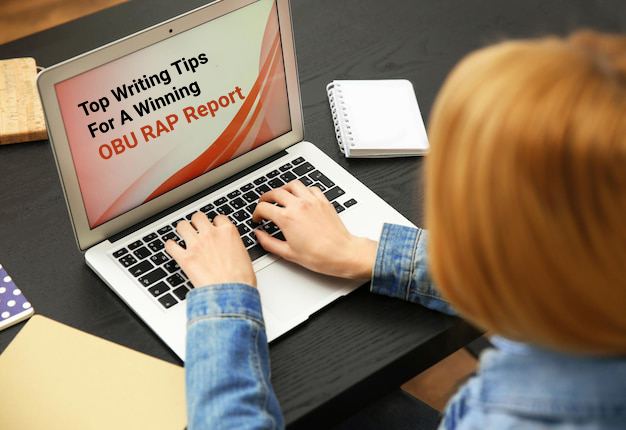The Oxford Brookes University Research and Analysis Project (OBU RAP) is a watershed moment for ACCA students wanting to obtain a BSc (Hons) in applied accounting. It entails not only a good grasp of accounting concepts but also skill in conducting research, analyzing figures, and effectively presenting findings. As the RAP is both a professional and academic report, presenting your thoughts logically is paramount to achieving a passing mark. This article identifies the best writing tips to assist you in creating a high-quality RAP report that will stand out.
Effective Writing Strategies for a Successful OBU RAP Report
1. Know the Purpose of the RAP
Before sitting down to write, you should realize what the RAP is intended to measure. The report tests your capacity to use accountancy knowledge in a real-world environment with evidence from research and analysis. Clearness, relevance, and critical thinking are the keywords. Don’t be tempted to produce a generic business report; your RAP is intended to specifically answer the topic chosen and show the use of ACCA knowledge.
2. Select the Appropriate Topic and Firm
Your success starts with selecting a topic that interests you and which leverages your strengths. OBU provides a selection of topics accepted by it, ranging from financial performance assessment to the influence of corporate governance.Choose a field where there will be enough information, available through market reports and financial statements resulting from the publicly listed corporations. As an assignment helper, a helper may also help you to refine your topic and organize your research, an activity that can seriously improve your writing work if you are interested in the topic.
3. Adhere to the Word Limit and Structure
The RAP has a rigid word limit of 7,500 words for the principal report and 2,000 words for the Skills and Learning Statement (SLS). Adhere to these limits. Going above the word limit can result in automatic failure, while a much shorter report can fail to provide the required depth. Organize your report in three sections:
➔ Part 1: Introduction and Objectives
Justify your topic and company choice, define your research questions and goals, and present an overview of the project.
➔ Part 2: Information Gathering and Methodology
Define your data sources (primary and/or secondary), analysis methods, and research limitations.
➔ Part 3: Analysis, Results, and Conclusion
Model the data using suitable models, make conclusions based on evidence, and relate findings to your objectives.
4. Write in a Clear and Concise Style
Academic writing does not mean using overly complex vocabulary or jargon. Use simple, professional language that communicates your points. Every sentence should have a purpose—avoid fluff, filler, or repeating information. If you’re unsure how to maintain this balance, an OBU RAP thesis writing service can help you refine your writing while staying aligned with academic standards.
For example:
- Poor: “It can be observed that the company’s finances have exhibited certain fluctuations during the years in view, which can or cannot be attributed to intrinsic or extrinsic reasons.
- Better: “Revenue of the company decreased by 8% during 2022 because of disruptions in the supply chain and increases in costs.”
- Use active voice and mix your sentence structure to keep the reader interested.
5. Use Relevant Theories and Models
Markers seek to see evidence of analysis, rather than description. To transcend reporting facts, use business and accounting frameworks such as SWOT, PESTEL, Porter’s Five Forces, Ratio Analysis, or the Balanced Scorecard. Tell the reader how each framework applies to your research and use it to interpret your findings.
For example, don’t simply calculate ratios; examine what they suggest. Tell why profitability fell or how improvements in liquidity may influence strategic decision-making.
6. Use Evidence to Support Your Analysis
Your report should be evidence-supported. Quote facts from reliable sources, like the annual reports of the company, industry journals, financial databases, and reliable news publications. While examining qualitative factors like governance or management style, mention references to board meeting minutes, corporate responsibility reports, or filings with regulators.
Each assertion you make must be supported by data. For instance, if you mention “the company is under hot competition,” include market share reports or industry insights to substantiate it.
7. Objectivity and Critical Thinking
Avoid issuing subjective or emotional remarks. Tone must be analytic, not advocatory or exploratory. An effective RAP illustrates critical thinking by presenting divergent viewpoints and considering limitations of the data or method.
Example:
- Subjective: “The CEO made a bad decision which damaged the company.”
- Objective: “The decision by the CEO to venture into non-core business resulted in operational expenses rising 15% with no matching hike in revenue.”
8. Use Accurate Referencing (Harvard Style)
Referencing is an important aspect of academic honesty. The OBU necessitates the Harvard Referencing System. Don’t forget to cite all your sources, for example, a graph, tables, quotations. Make sure the citations you make from the text follow the items in your reference list.
9. Be Mindful of Presentation and Layout
Even though content is the most important thing, presentation counts as well. Ensure your report is professionally laid out:
- Apply consistent fonts (such as Times New Roman or Arial, size 11–12)
- Utilize clear headings and subheadings
- Number pages and sections in a logical order
- Caption all tables, figures, and appendices
- Insert contents page and list of references
Have your layout uncluttered, clean, and visually nice. Graphs and charts must be legible and interpreted in the supporting text.
10. Carefully Proofread and Review
Spelling, grammar, and formatting errors can undermine your credibility. Always proofread your RAP before submission. Use spelling and grammar check functions, but also proofread the document manually or have a peer read it with fresh eyes.
Apart from typos, ensure that you:
- Logical flow between sections
- Consistency in tense and tone
- Redundant or off-topic content
- Proper placement of references
The final check will pick up issues that could otherwise cost you marks.
Final Thoughts
Crafting a successful OBU RAP report is a serious but fulfilling task. You will get a chance to demonstrate both your skills in accounting and research, analysis, and presenting thoughts succinctly. By using these writing strategies–choosing a strong subject, using templates correctly, knowing how to credit sources, and remaining concise–you can increase the chances of succeeding.
Keep in mind that quality writing is reflective of critical thought. Invest time to plan, write, and revise—and your RAP report can serve as a launching point to academic and professional success.
References
UKAH.2022. Nursing Assignment Services. Online Available at: < https://www.ukassignmenthelp.uk/ > (Accessed: 12 May 2025).
Jones, J.S., Jones, J.S. and Beauvais, A.M., 2022. Psychiatric mental health nursing: An interpersonal approach. Jones & Bartlett Learning.


